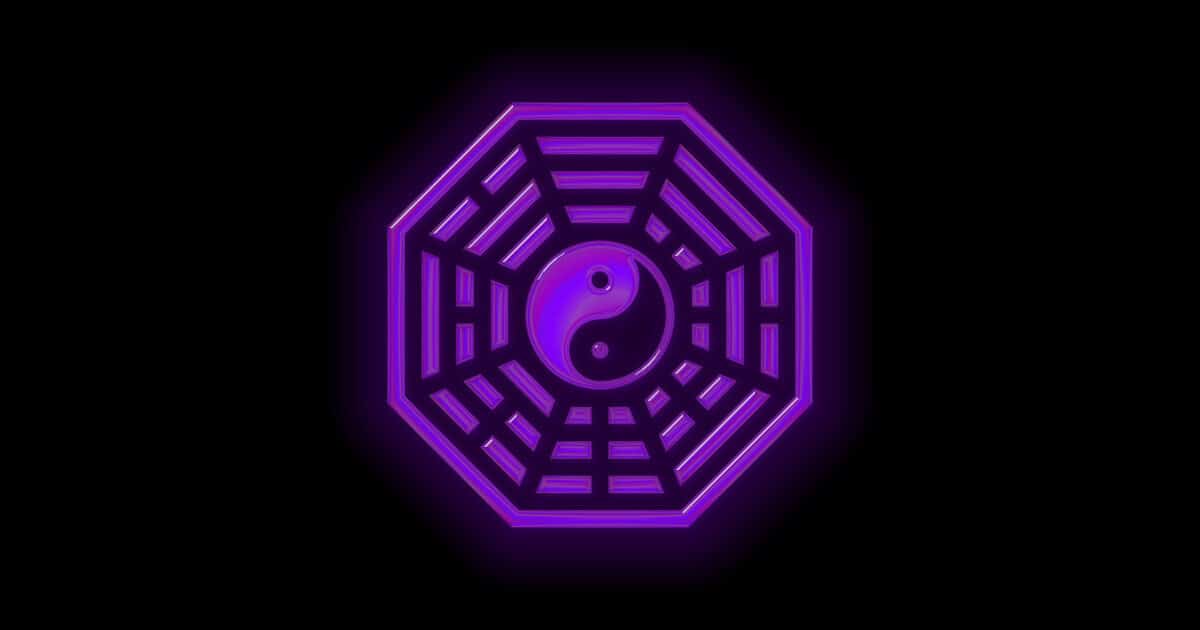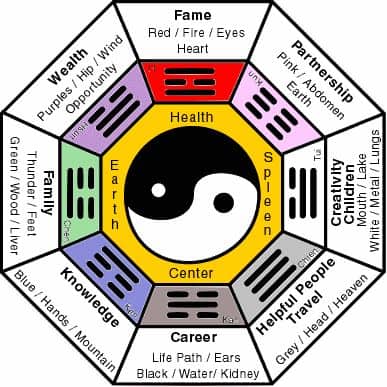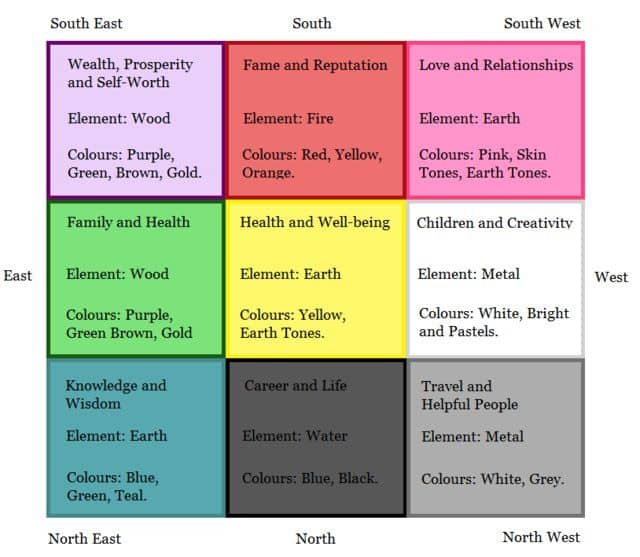The Ancient Art of Feng Shui
Last Updated: September 19th, 2023
By: Mark Stevens
What Is Feng Shui?
Feng shui is an Ancient Chinese art that focuses on creating harmony and balance within our lives through the placement of furniture and objects, as well as the use of colour within our environments. In feng shui design is sacred and miraculous. It can impact every aspect of our lives from financial security to emotional health and mental clarity. It is largely focused on making our environments work for ourselves and enabling manifestation through the subtle manipulation of the energy field within our environment.
The translation of feng shui is “wind” and “water”. The idea of feng shui is to manipulate our environments in a way that promotes energy flow and reduces any energy blockages. Within feng shui there is a profound belief that we as humans are divinely connected to the environment in which we inhabit, an attachment that is based upon cosmic energy and unity.
Contents

A Brief History
The origins of feng shui have roots in both India and China. The Indian belief system of “vastu shastra” largely influenced the art of feng shui and its multiple schools. The vastu shastra system was based on the concept that man-made buildings have the traits of living organisms. There was also the thought that they have deep connections to the elements as they spent much time baring witness to the wonders of the elemental forces around them, and that played a role within their formation. When this school of thought passed through Tibet with the Indian vastu practitioners, the Chinese people took to the idea which then formed the basis of the art of feng shui that we know today! The practise dates to 6,000 B.C.
The Schools of Feng Shui
There are multiple schools of Feng Shui that lay entwined within the roots of history. The oldest is known as classic feng shui, or the form school of feng shui. This school focused on the ancient need to live in a safe and secure environment that was protected.
The compass school focuses on the position of the stars and planets and related to the Earth’s seasons. It is underpinned by Chinese astrology and mathematics, which makes it more complex than the other schools.
The most renown school, was created by Professor Lin Yun in the 1980s and is known as the Black Hat school. It is far less complex than the form and compass school and has such been adopted by the Western world in recent years. The Black Hat school of feng shui is the focus of this article.
How Does Feng Shui Work?
Feng shui works by balancing the chi, or cosmic energy forces, within many areas of our lives. The main aim of feng shui is the harmonise chi energy and allow it to move with ease and efficiency through the spaces we create in our lives.
Chi moves through the five elements. Earth, fire, metal, water, and wood. All these elements are generally present within our homes; however, we can add them (or implement colours that relate to the elements) into our chosen spaces to create balance. In doing this, we are also able to change the flow of chi energy within our environments.
The Treasure Map and the Roadmap – the Feng Shui Ba Gua Maps
The art of feng shui encompasses two main bagua maps that are used with the floor plan of the home, or room that we wish to achieve balance and harmony within. Bagua maps enable us to analyse the areas of our home and aid us to see how these areas relate to the energy, or chi, within them. The translation of Bagua is “eight sections”. The ninth section is the centre, which will be explained later on in the article!
The octagon shaped bagua is more commonly used within the Eastern schools of feng shui and due to their complex nature and reliance on a deep understanding of either astrology or compass based navigation, the octagon shaped bagua is used much less within the more modern practise of feng shui that we see today.

The Rectangular/Square Map
Within the Black Hat sector of feng shui, there is a specific kind of bagua that is transferable to any layout, within a room or a full home. It comes in the form of a nine-grid square. The ability to use this bagua in many versatile ways makes the practise more accessible to the modern day feng shui practitioner and this is one of the reasons that the Black Hat sect of feng shui has become the most popular access to the ancient art within our modern day and age. The usage of the Black Hat bagua is simple and very easy to follow.

As you can see from the above image, the rectangular or square bagua is much easier to follow and this diagram comes with the related colours, elements and characteristics that are portrayed within the energy fields of each section of our home.
The Dynamics of the Rectangular/Square Bagua
The map is represented in a three-by-three grid. In the black hat sect of feng shui – the compass points as noted on the diagram of the three-by-three bagua grid are not mapped with a compass. If the bagua grid is aligned with the architectural front door of the floorplan the top direction should always read “south” regardless of actual compass navigation points. The grid serves as a map to decipher energy fields that flow through eight predominant areas of our life. These areas consist of:
- Wealth, Prosperity, and Self-Worth
This gua (or section) enables us to live in abundance where our connections with others are involved, as well as, finding an abundance of financial and material wealth.
- Fame and Reputation
This gua of the bagua aids us to build a character of self, this includes how we are viewed by others and how other people view us. It allows us to gain access to the parts of our self that we want to enhance.
- Love and Relationships
This gua is not just dedicated to the divine connection we have with others, but also the connection we have with ourselves. It encompasses not just personal relationships but also professional and working relationships too.
- Children and Creation
This gua promotes the inner child within all of us, it allows us to connect with our own inner innocence and to focus on aspects of our lives that bring us great joy and unlock the inner child within us all.
- Helpful People and Travel
This gua encompasses helping. This could be asking for help ourselves, from those around us, our spirit guides or guardian angels for support. It also promotes spontaneity and adventure, be that doing more things to spark an energy of excitement in your life, or physically venturing on an outing or holiday.
- Career and Life
This gua benefits our professional life, or career. It helps with finding our own divine path and connecting to the deeper purpose of why we’re here and what we should become motivated to do with our professional lives.
- Knowledge and Wisdom
This gua promotes spirituality, as well as knowledge and wisdom. It promotes nourishing the spirit and sharing what we learn to help others on our spiritual path and journey.
- Health and Family
The energy within this gua honours those that we see as family, our ancestors and extended family included. It aids us with our connection to others and helps us to build healthy connections with those individuals.
In the centre of the rectangular bagua lies a centre point. This point is generally thought to represent a completion of the surrounding guas; however, it has been found by some practitioners to have correlation with health and well-being. As such, it is important to make use of this centre field of energy when mapping out the guas within our chosen environment. The colours used in this section are yellow and earthen tones. The element that represents the centre section is earth.
The rectangular bagua is mapped the same in every household within the Black Hat sect of feng shui. It can either be utilised across the full floor plan of a home or used as a map within specific rooms of the home. This type of bagua makes the re-design of any room easy and accessible, as it does not depend on an understanding of astrology or navigation!
How to Utilise the Bagua to Implement Feng Shui Into Your Daily Life
There are numerous steps to follow when re-designing a room or space to fit in accordance with the Black Hat sect bagua map. The three simple steps are as followed:
Step 1 – Draw up Your Floorplan
Print or draw up a copy of the rectangular bagua map and lay it over the full floor plan of your chosen environment or space. If you do not have a printed copy of your spaces floor plan, you can draw it up by mapping each space/room in your home and noting any doors. It is best to get an A4 sized copy, or larger if possible. This allows us to view the plan with ease. Some feng shui practitioners recommend starting with one room and continuing with the surrounding rooms until the floor plan is complete. It is important to note that when completing the floor plan design, any fittings, and fixtures such as chimneys or plumbing appliances must be noted. As well as any doors within the home and, also which direction they open in. (Repeat this process for the second story of your home.)
Step 2 – Place Bagua Map Over the Floorplan
Firstly, you need to place a copy of the bagua over the floor plan you’ve printed or drawn. It is essential that the bottom of the bagua grid aligns with the front door of the space. If the space is not rectangular in shape, you can square it off, this is handy as not every space is guaranteed to be rectangular. We can then divide the shape into nine sections, a three-by-three grid. When aligned properly, the front door should always be within either the knowledge and self-cultivation, career or helpful people and travel gua. (This is helpful as a guideline to use to ensure that your guas are matching up with the plan.) Not all floorplans will be square in shape, if this is the case, we need to square off the floor plan, we can do this by extending the cut away parts of the plan, to form a square shaped plan under our bagua. The front door is known as the “mouth of chi” and therefore it is important to align the map with the front door, as it determines the flow of energy into the home. From here, divide the floor plan into the three-by-three grid with nine even sections. The centre is known as the heart of the home, or “tai-chi”.
Step 3 – Labelling the Gua
Place the bagua map next to the floor plan you have drawn up to show how the life sections translate to the bagua map you have created. From here you can see which sections of chi energy flow through each section of your home!
How to Apply Colour and Objects to Magnify Energy Within Our Lives
Within the Black Hat sect, a colour can be used within an area to represent the element, rather than having to have an item made of the specific element within the space. We can refer to the diagram of the rectangle/square bagua above for references to which colour marry up with each of the elements. For instance, if we needed to enhance the energy within our field of knowledge and wisdom, we may either have a natural earthen object such as a bonsai tree, or we may enhance this field with the use of the colours blue, green or teal. Please find below, a list of the gua sections and their related elements and colours!
Wealth, Prosperity, and Self-Worth
Element: Wood
Colours: Purple, green, brown, gold.
Fame and Reputation
Element: Fire
Colours: Red, yellow, orange.
Love and Relationships
Element: Earth
Colours: Pink, skin tones, earthen tones.
Children and Creation
Element: Metal
Colours: White, bright, and pastel colours.
Helpful People and Travel
Element: Metal
Colours: White, grey.
Career and Life
Element: Water
Colours: Blue, black.
Knowledge and Wisdom
Element: Earth
Colours: Blue, green, teal.
Health and Family
Element: Wood
Colours: Purple, Green/brown, Gold.
Centre Gua – Health and Well-being
Element: Earth
Colours: Yellow, earthen tones.
Conclusion
The ancient art of feng shui is a great way to promote positive changes within our own lives by manipulating the environment that we live in. It is a great way to reconnect with a modern verse of ancient wisdom. Follow the steps to the best of your ability and you will be on your way to feng shui in no time at all!
Summary
The ancient Chinese practise of feng shui aims to bring balance and harmony into our lives by strategically placing objects and furniture in our settings and by employing colour.
Design is considered sacred and wondrous in feng shui. The goal of feng shui is to influence our surroundings in a way that encourages energy flow and removes energy blockages in our homes, which directly affects how we live as a result. Feng Shui’s roots can be found in both China and India. It has been an artform since 6,000B.C.
By restoring harmony to the chi, or cosmic energy forces, present in many aspects of our life, feng shui works. Feng Shui’s primary goal is to harmonise chi energy and enable it to flow smoothly and effectively through the environments we design in our live.
The form school and the compass school are traditional schools of feng shui. The most modern school is the Black Hat sect which was founded in the 1980s and is the simplest to understand and use – and is the school we have concentrated on in this post.
We hope you’ve found this post helpful and if you’ve enjoyed it please feel free to share it with your mystical or spiritual friends using the buttons below. If you have any comments, questions or other feedback please let us know using the comment form below.
Thanks for reading!
References
https://fengshuimanhattan.com/blog/2018/6/21/feng-shui-bagua-map-basics-for-your-home
https://en.wikipedia.org/wiki/Feng_shui
https://www.thespruce.com/what-is-feng-shui-1275060
https://education.nationalgeographic.org/resource/feng-shui
https://www.everydayhealth.com/photogallery/feng-shui-your-home.aspx
https://karenrauchcarter.com/why-i-use-the-black-hat-sect-style-of-feng-shui-more-than-other-styles/
https://fengshui.com.au/about-feng-shui/schools-of-feng-shui/the-black-sect/
Featured Image by Gustavo Rezende from Pixabay
